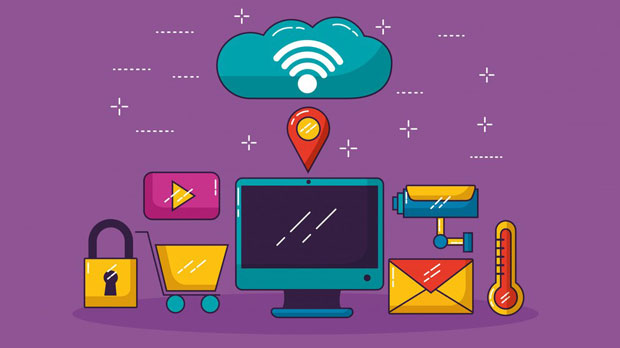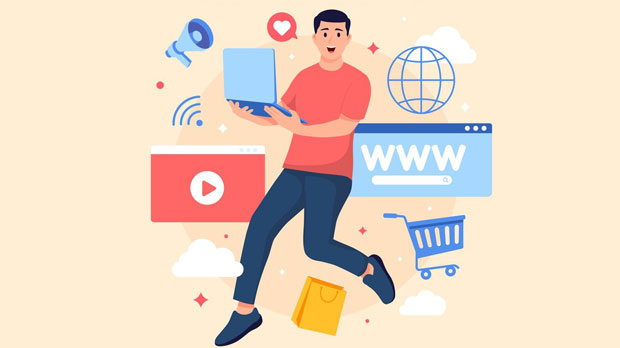The dynamic residential proxy and data center proxy are both commonly used tools for enhancing online privacy, improving speed, and managing web traffic. However, they differ in various aspects, including their origin, functionality, and use cases. Dynamic residential proxies use IP addresses associated with real residential locations, making them appear more legitimate to websites, which reduces the likelihood of detection and banning. On the other hand, data center proxies operate from centralized data centers and are often faster but more likely to be flagged or blocked due to their identifiable nature. Understanding these differences is crucial for selecting the right proxy for specific needs, whether for browsing, web scraping, or online security. What Are Dynamic Residential Proxies?Dynamic residential proxies are a type of proxy service that routes your internet traffic through a network of residential IP addresses, making it appear as though the traffic originates from real users. These IP addresses are provided by Internet Service Providers (ISPs) and are typically associated with households. Dynamic residential proxies have the key advantage of offering greater anonymity and credibility because websites and services cannot easily distinguish between a residential user and a proxy user. Additionally, these proxies can change frequently, providing further protection against detection.Because of the legitimate nature of residential IP addresses, these proxies are ideal for tasks that require bypassing geo-blocked content, avoiding IP bans, and conducting web scraping activities that might be blocked by websites with stricter security protocols. However, the main disadvantage of dynamic residential proxies is that they tend to be slower than data center proxies due to their reliance on real-world residential connections.What Are Data Center Proxies?Data center proxies, in contrast, originate from data centers rather than real residential addresses. These proxies use IPs provided by hosting companies that rent server space in data centers. While they are generally faster and more affordable than residential proxies, they are also more likely to be flagged by websites. This is because data center proxies are easy to identify—they do not belong to residential ISPs and often originate from a limited number of known data centers.These proxies are commonly used for tasks that require high-speed performance, such as managing large-scale web scraping projects or bypassing geo-restrictions. They are ideal for businesses that need fast connections and are willing to deal with the potential risk of being blocked. Data center proxies are also often chosen for use in various automation tasks like running bots or scraping public data from websites.Key Differences Between Dynamic Residential and Data Center Proxies1. Source of IP AddressesThe most significant difference between dynamic residential proxies and data center proxies is the source of the IP addresses. Residential proxies derive their IPs from real residential addresses provided by ISPs, while data center proxies use IP addresses associated with data centers and hosting providers. This makes residential proxies appear more legitimate, as they mimic real users, while data center proxies are easily identifiable as non-residential and thus more vulnerable to detection.2. Speed and PerformanceData center proxies are typically faster than dynamic residential proxies. Since data center proxies operate from centralized locations and are optimized for speed, they tend to offer more reliable and quicker connections. Residential proxies, however, often experience slower speeds because they rely on real-world residential networks that may not be as optimized for high traffic volumes.This performance difference can be important depending on the task at hand. For high-speed, large-scale data scraping or tasks requiring real-time access, data center proxies are often preferred. Conversely, for more privacy-sensitive activities or tasks requiring a greater level of discretion, dynamic residential proxies may be better, despite their slower speeds.3. Anonymity and Detection ResistanceDynamic residential proxies provide a higher level of anonymity compared to data center proxies. Websites are less likely to detect or block these proxies because the traffic appears to come from regular residential users. In contrast, data center proxies are more easily detected and flagged because their traffic originates from known data centers. As a result, dynamic residential proxies are often the preferred choice for tasks like online purchasing, account management, or bypassing geo-restrictions where a higher level of stealth is required.4. Cost ConsiderationsCost is another area where dynamic residential proxies and data center proxies differ. Residential proxies tend to be more expensive than data center proxies because they use real residential IPs, which come with a higher operational cost. In addition, the process of rotating and managing residential IPs is more complex and requires more resources, further driving up the cost. On the other hand, data center proxies are much cheaper due to the nature of their infrastructure, which can support large volumes of proxy traffic at a lower price point.5. Use Cases and ApplicationsThe choice between dynamic residential proxies and data center proxies largely depends on the specific use case. Dynamic residential proxies are ideal for tasks where anonymity and bypassing restrictions are essential, such as accessing region-blocked content, preventing account bans during web scraping, or managing social media accounts without raising suspicion.Data center proxies, on the other hand, are more suitable for tasks requiring speed and high-volume usage, such as large-scale data scraping, running bots, or automating tasks that do not need to hide the origin of the IP address as much. These proxies are well-suited for businesses that require efficient, high-performance solutions and are willing to accept the risk of being flagged by websites.Which Proxy Should You Choose?The decision between dynamic residential proxies and data center proxies ultimately depends on your specific needs and budget. If anonymity, stealth, and avoiding detection are your top priorities, then dynamic residential proxies are likely the better choice. However, if you need fast speeds for large-scale data scraping or automation tasks, data center proxies may be the more practical and cost-effective option.It is also important to assess the risks involved. If you are dealing with sensitive operations or tasks that involve interacting with high-security websites, you may prefer the added layer of protection offered by dynamic residential proxies. Conversely, for less sensitive activities where speed and affordability are more important, data center proxies may be sufficient.In conclusion, dynamic residential proxies and data center proxies serve different purposes and offer distinct advantages and disadvantages. While dynamic residential proxies excel in providing anonymity and reducing the likelihood of being detected, data center proxies are faster and more cost-effective for high-performance tasks. Understanding the key differences between these two types of proxies will allow you to make an informed decision based on your specific requirements, whether you prioritize stealth, speed, or cost-effectiveness.
Apr 03, 2025
![arrow]()




























































